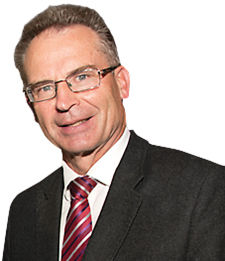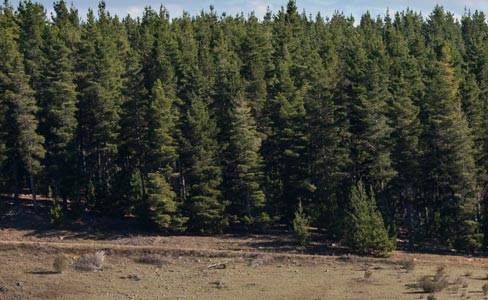“The ACT government, it seems, has in its planning given consideration to, or at least imagined, a population for Canberra as high as 1.5 million (ie 1.1 million more than currently live here),” writes JON STANHOPE.
THERE’S been discussion recently about the desirability of establishing a local government council or councils in the ACT, mirroring those that exist in every state, the NT and, indeed, Christmas, Cocos and Norfolk Islands.

While the idea is clearly worthy of mature debate, a big ask I know, it was nevertheless interesting that Chief Minister Andrew Barr, in response to media questioning, noted quite reasonably, that he thought that the Canberra population was currently too small to justify the expense or warrant an increase in the number of elected representatives at either a local government level or indeed in the Legislative Assembly.
What stood out for me in the Chief Minister’s response was his acknowledgement that when the ACT’s population reached 1.5 million or perhaps even a million people, that it might be appropriate to incorporate local government councils into the ACT system of governance.
What these comments suggested is that the ACT government, it seems, has in its planning for the future growth of Canberra given consideration to, or at least imagined, a population for the city as high as 1.5 million (ie 1.1 million more than currently live here).
If that’s not the case, then it begs the question on what basis did the Chief Minister raise these numbers?
To provide some perspective, the ACT Treasury, in research underpinning the report of the “Taxation Review” handed down just over a decade ago by the then Treasurer Andrew Barr, asserted that there was sufficient developable land in the ACT, including that at Kowen, to support housing for 100 years at the then rate of population growth assuming, consistent with the then government policy, that 70 per cent of land would be released for detached housing and 30 per cent for attached housing, ie apartments and flats.
Since that research was undertaken the Labor/Greens alliance has reduced the ratio of land to be released for attached housing to 30 per cent and increased it for attached housing to 70 per cent. Because of this very significant change in housing and land-supply policy, it follows that the capacity of the ACT to provide housing will have increased proportionately.
Where will all these extra people that the government has said will live here actually reside? While I am particularly interested in where they will live, I am pretty sure, as an aside, that some of their water will be coming from a sewage purification plant.
The government has, as we know, sensibly stockpiled thousands of hectares of developable land to the west of Belconnen, in the Molonglo Valley and to the south of Weston Creek and Mount Stromlo all the way to the Murrumbidgee River.
That land will all come in handy but will barely scratch the surface of the anticipated need. Admittedly, much of the growth in housing will be met with apartment towers along the expanding tramway corridors such as Adelaide Avenue, Belconnen Way, Cotter Road and Drakeford Drive all of which, I assume, will in time resemble Northbourne Avenue. In addition, as already mooted for Yarralumla, and one imagines all suburbs fortunate enough to be adjacent to a tramway, apartment blocks will also rise through the middle of those suburbs.
But again, that will not be sufficient to meet our anticipated needs, which suggests that the decision to extend the suburb of Ginninderry across the ACT border into NSW was, after all, an admirably strategic decision, made in response to the ACT’s future housing needs and demonstrates a level of foresight and advanced planning that, I admit, I have not previously recognised or appropriately acknowledged.
The precedent now established by the Ginninderry expansion into NSW raises the possibility for further cross-border collaboration most relevantly on the eastern, Queanbeyan, side of the border.

The Kowen plateau, which is north of Queanbeyan but in the ACT and currently covered by pine trees, has always been included in the inventory of land within the ACT to be utilised, as and when required, for housing. I understand it has the potential to house somewhere in the order of 300,000 people.
It is, unfortunately, logistically tricky, and hence potentially costly, to access the Kowen plateau from the Canberra side. It seems logical to me, therefore, in the interests of stabilising Canberra house prices by developing a pipeline of affordable land for housing, that the ACT government agree to swap, as a start, say 400 hectares of the Kowen plateau, with NSW in exchange for the 400 hectares of land that NSW has, in effect, agreed to cede to the ACT for the Ginninderry development.
The ACT border is surely going to have to be changed, in any event, to accommodate the Ginninderry development, so why not do it as a job lot and change it on the eastern edge at the same time. We are, after all, quite adept at land swaps.
I am sure Queanbeyan mayor Tim Overall, who has successfully provided housing for 15,000 Canberrans at Googong, would relish the opportunity of housing a further 15,000 Canberrans at Kowen.
Who can be trusted?
In a world of spin and confusion, there’s never been a more important time to support independent journalism in Canberra.
If you trust our work online and want to enforce the power of independent voices, I invite you to make a small contribution.
Every dollar of support is invested back into our journalism to help keep citynews.com.au strong and free.
Thank you,
Ian Meikle, editor




Leave a Reply